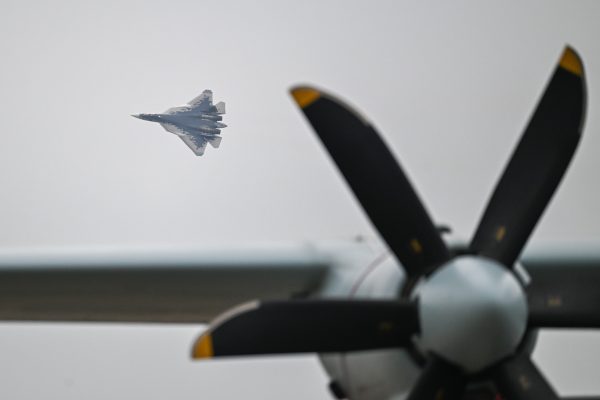Innovation has been a Department of Defense (DoD) mantra for the last eight years, supported by increased senior leader support and budgets.
In retrospect, these new defense innovation efforts and organizations with additional staffing, collaborative workspaces, well-funded efforts, and workshops have not succeeded.
Resources don’t automatically translate to effect because you cannot buy the willingness to take calculated risks, along with critical thinking and vision. There has been improvement, but the US defense establishment is still less innovative, responsive, adaptive, and forward-looking than many civilian counterparts, as large organizations are forced to adjust to an ever-changing operational environment.
The pharmaceutical industry needed less than 12 months to create a COVID-19 vaccine, starting with identifying a new pathogen, SARS-CoV-2, finding the vaccine response, testing, quality assurance, production, and delivery to the population. This was a defining crisis of course, but as Henry Kissinger once said, the absence of options clears the mind beautifully.
The medical field has embraced and fielded technology, with telehealth, remote surgery, and shared medical record-keeping through a large enterprise. It works rapidly and at scale, which supports knowledge management leading to innovation.
Meanwhile, defense still operates in an analog world, introducing the cloud only recently and lagging at least 10 years in the embrace of new technologies. The standard counter-argument is that defense handles sensitive information — but so does the medical field, where disclosure leads to lawsuits, federal non-compliance, and regulatory consequences as serious as any spillage in a defense environment.
Why is the defense establishment less innovative? The answer might be two-fold: first, internal incentives promote risk aversion instead of professional risk-taking, and second, constant redeployments — a theme in the DoD — underline staff commitment to the success of a project.
On the military officer side, career paths are a product of the Defense Officer Personnel Management Act (DOPMA), enacted in 1980, a staffing model which requires constant progression on the ladder, or a departure from the service (known as “up or out”.)
In 2017, Senator John McCain described the DOPMA model as outdated. He described it as an, “overly rigid system that is increasingly unable to cope with the demands of the modern force.”
Innovation is informed risk-taking, but a staffing model requires that you explain your success. And how do you explain an innovative project that failed — even if it was a calculated risk?
DOPMA creates an environment with a low tolerance for “failure,” and innovation offers numerous failures rather than instant successes. This risk aversion would be less severe if there were time to drive a project from start to end by accepting failures and setbacks and then adjusting to produce a final product.
The two–and–a–half years an officer stays in the role before the permanent change of duty station (PCS) simply does not provide the time to succeed.
So, the incentives for officers to be innovative and adaptive, the upside of risk-taking, and putting bets on new approaches are not in place. Yet military personnel are hardly to blame for this state of affairs. They behave as they do because Congress and political decision-makers have provided perverse incentives.
It doesn’t matter how good DoD professional military education (PME) is if the incentives create obstacles to exploiting the intellectual enhancement it has provided.
The medical comparison is well-made in another sense. The medical and military fields deal with life, death, and health questions with long-term impacts. More similarities exist between the medical and military domains; both are operated by extensively trained staff and experts. Both the US military and US health care are enormous and extensively funded organizations. Why is the medical field a more successful innovator?
First, the medical field sees every individual as uniquely talented. Everyone has the potential to produce an innovative idea. Talented doctors or medical researchers are asked to stay and continue in their field of study and to strive toward excellence to create a solution.
The defense establishment, by comparison, is poor at honoring staff and tends to ignore it when it finds a square peg for a square hole. The military believes anyone with the same career progression and training can do any job.
So, instead of being given the chance to drive a project and succeed, the military will replace a post-holder with someone of equal training who is expected to intellectually self-ignite. This may of course happen, or it may not.
Second, the medical field does not discuss or consider mission command, or auftragstaktik; they live it. Healthcare and medical research organizations often are often better run than professional armies. A pharmaceutical research team will likely better understand where the team is heading, the end state, and their superior’s intentions to get there – and thereby work to support their commander’s intent.
Current discussions about the impact of drone warfare, driven by the experiences in the war in Ukraine, were already visible in the Nagorno-Karabakh war in 2020. A few think tanks wrote about the impact of drones and the massive destruction of command posts, but still, three years later and after two years of similar developments in Ukraine, little has been done to implement and adapt to a new operational environment.
A great article in the June 2023 issue of US Army’s Military Review titled “The Graveyard of Command Posts” puts its finger on the issue of command survival, but it will take several years before the changing operational environment has led to successful adaptation, with all the risk that entails in the meantime. I’m confident enough of the problem to say that if the introduction of drones, a sudden disruptive technology, had been a medical problem then a solution would already have been found.
The core of the problem is the incentives to invest time, energy, and effort in a project that could fail royally (even though it might in fact be a great success) is seen as a career risk.
How to solve this?
The fastest way to improve defense innovation is to change the incentives for personal decision-making, creating an alternative career path that allows dedicated innovation work without being punished by a derailed career.
This is an acute problem. It needs to be fixed.
Jan Kallberg, Ph.D., LL.M., is a non-resident Senior Fellow with the Transatlantic Defense and Security program at the Center for European Policy Analysis (CEPA) and a George Washington University faculty member. Follow him at cyberdefense.com and @Cyberdefensecom.
Europe’s Edge is CEPA’s online journal covering critical topics on the foreign policy docket across Europe and North America. All opinions are those of the author and do not necessarily represent the position or views of the institutions they represent or the Center for European Policy Analysis.

From the Ashes: Cultural Identity and National Security in the Age of Conflict
Date: November 19, 2024
Time: 10:00 a.m. – 6:00 p.m. CT




